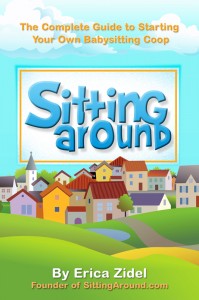I am nothing if not strong-willed. Bullies don’t make me fearful; they make me indignant. Example: When I was three years old, I was out shopping with my mother. My brother had just been born, and I was climbing up a store display, trying to reach a teething ring for him. An older woman came by and told me (very directly, I might add) to, “Hold [my] horses.” Hold my horses, indeed. I marched right up to her and clarified that: 1) She was neither my mother; nor 2) Was I the owner of a single horse, much less a group of horses.
As direct as I have been with bullies in my own life, I am not entirely sure how to handle them when it comes to my son. I never want him to feel picked on, but I know that my intervening might cause more harm than good in the long run. I want him to be confident to stand up for himself (knowing, of course, that I have his back). So, when I observed his first instance of playground bullying last week, I was at a loss for what to do.
School had just let out and he wanted to play on the playground for a bit before we headed home. Ever the patient child, he waited in front of the swings for 15 minutes until one opened up, even losing out on a few open swings to more aggressive children. Finally, a boy smaller than my son (but a year or two older) relinquished his swing. Happily, Gavin ran over and climbed up. As it so happened, the older boy did not feel his turn was over and, a minute or so later, he returned, demanding Gavin get off the swing. Gavin started to protest. So the older boy hit him and then shoved him off the swing. Appalled, I watched Gavin run and hide under the playground bridge. But the worst part? The boy’s mother was standing right there, watching the entire thing. She didn’t so much as bat an eyelash.
Not entirely sure how to act, I went to console my child who was crying hysterically and horrified at the other boy’s behavior. Meanwhile, I was horrified at the other mother’s behavior, behavior which, at this point, consisted of avoiding my angry glare.
I managed to calm Gavin down and we went over to the bully on the swing. “Excuse me,” I said, my face in his. “You need to apologize to this little boy.” I pointed to Gavin, who was standing half behind me. The bully started to protest that his turn wasn’t over and therefore, he was in the right. “It doesn’t matter,” I said, more firmly this time. “You don’t hit or shove other kids. And you need to apologize to him.” Realizing he wasn’t going to win, the bully muttered something and hopped off the swing. Gavin, still sobbing, but regaining his confidence, hopped up in his place.
I watched the boy and his mother leave the playground. All the while, she avoided my stare. Not once did she scold her son. In fact, she didn’t even talk about it. Which was really befuddling. As a mother myself, I couldn’t imagine watching my child hurt someone and not reprimanding him for it. I couldn’t imagine ignoring what had happened, because that would be doing a disservice to him as a person. And, it got me wondering: how much of a role do we as parents play in the types of people our children become?
